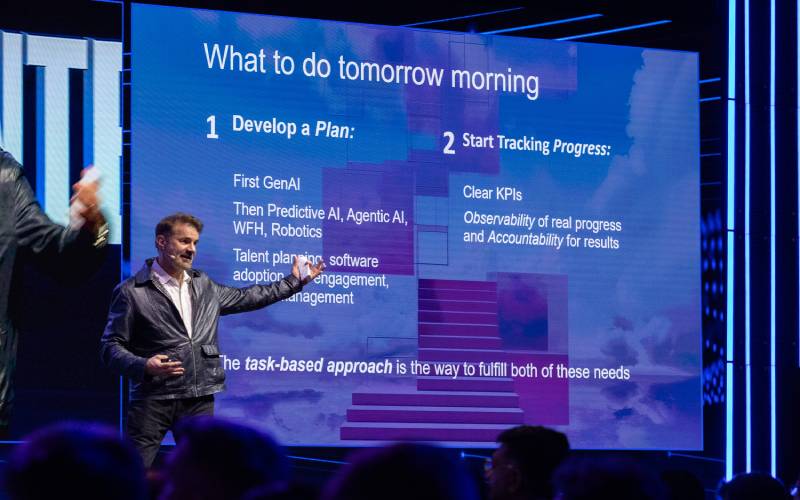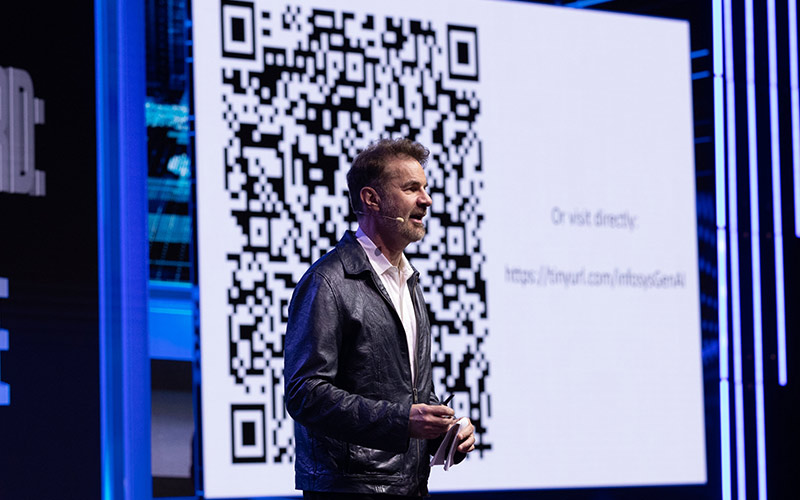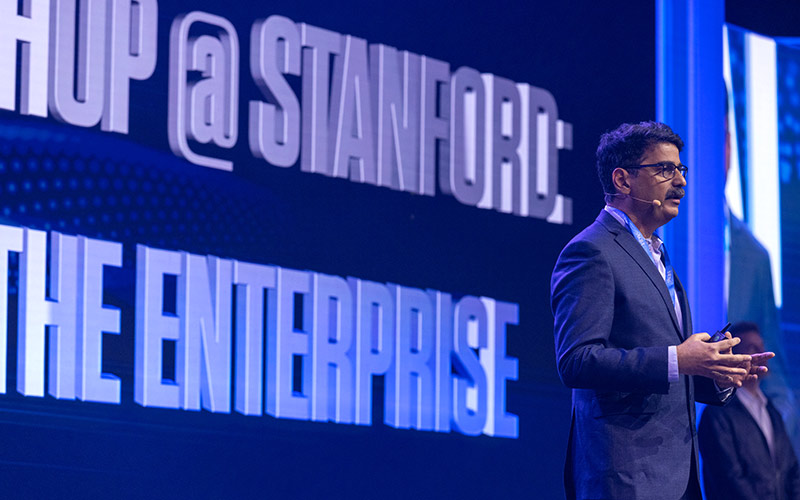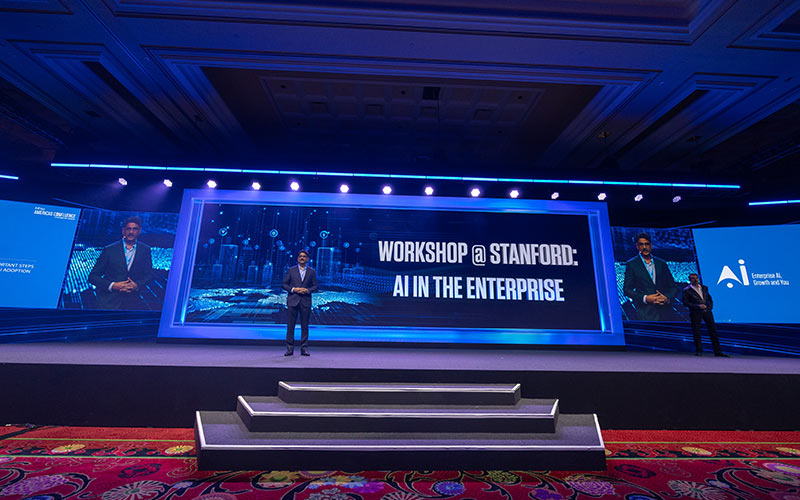
The co-author of five books including The Second Machine Age, Dr. Erik Brynjolfsson is a Jerry Yang & Akiko Yamazaki Professor & Senior Fellow at the Stanford Institute for Human-Centered AI (HAI) & Director of the Stanford Digital Economy Lab.
Preparedness was the defining narrative of Dr. Erik’s session at Infosys Confluence. Tracing the methods and metrics that would influence outcomes from scale to success, he offered up a crash course in enterprise AI. The session was dotted by the many dualities that characterize AI, be it APIs for KPIs, or augmenting over replacing.

Key Takeaways

There’ll Always Be More Pilots
When jet engines were introduced in aircrafts in the 1930, it made pilots more productive and put more pilots in the air. Chances are, AI could take that course too, by creating more jobs rather than erasing them.

Deconstruction Defines the Application
Every occupation, every job, is a bundle of tasks. It's the atomic unit of work. When you take that job and break it down to individual tasks, then you can make real progress and put AI to work faster across the enterprise.

Towards the Human Superpower
If AI standardizes workflows to manage the mundane, then humans start performing at a much higher order of improvisation and handling exceptions. While the machine is the core, humans bring context and color.

Light Up the Beacons of Value
Once the ship is in sail, the destination is a long way away. In any AI project, from conception to realization, it’s important to measure all the way by getting your ROI sensors in place right from the start.
You need to have a ranked list of your opportunities and then get together with your colleagues and put a plan together. That's the minimum viable plan.





